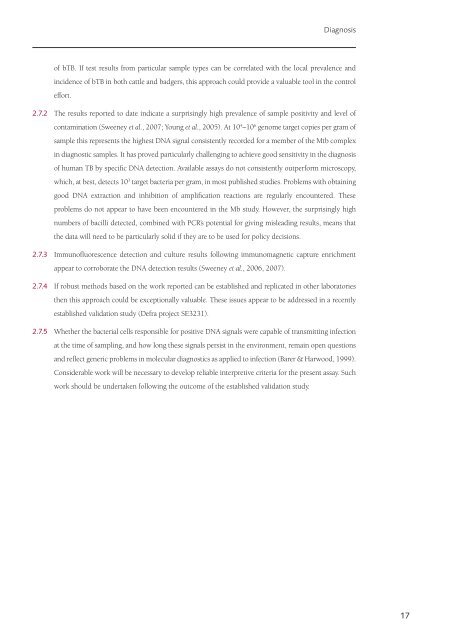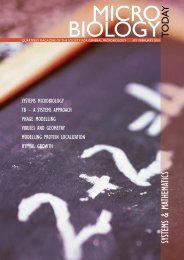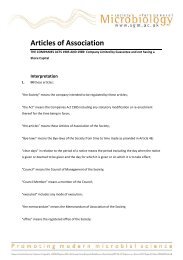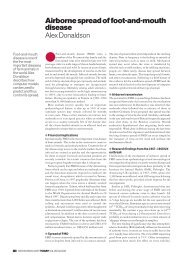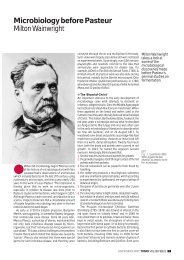final report - ARCHIVE: Defra
final report - ARCHIVE: Defra
final report - ARCHIVE: Defra
Create successful ePaper yourself
Turn your PDF publications into a flip-book with our unique Google optimized e-Paper software.
Diagnosis<br />
of bTB. If test results from particular sample types can be correlated with the local prevalence and<br />
incidence of bTB in both cattle and badgers, this approach could provide a valuable tool in the control<br />
effort.<br />
2.7.2 The results <strong>report</strong>ed to date indicate a surprisingly high prevalence of sample positivity and level of<br />
contamination (Sweeney et al., 2007; Young et al., 2005). At 10 4 –10 6 genome target copies per gram of<br />
sample this represents the highest DNA signal consistently recorded for a member of the Mtb complex<br />
in diagnostic samples. It has proved particularly challenging to achieve good sensitivity in the diagnosis<br />
of human TB by specific DNA detection. Available assays do not consistently outperform microscopy,<br />
which, at best, detects 10 3 target bacteria per gram, in most published studies. Problems with obtaining<br />
good DNA extraction and inhibition of amplification reactions are regularly encountered. These<br />
problems do not appear to have been encountered in the Mb study. However, the surprisingly high<br />
numbers of bacilli detected, combined with PCR’s potential for giving misleading results, means that<br />
the data will need to be particularly solid if they are to be used for policy decisions.<br />
2.7.3 Immunofluorescence detection and culture results following immunomagnetic capture enrichment<br />
appear to corroborate the DNA detection results (Sweeney et al., 2006, 2007).<br />
2.7.4 If robust methods based on the work <strong>report</strong>ed can be established and replicated in other laboratories<br />
then this approach could be exceptionally valuable. These issues appear to be addressed in a recently<br />
established validation study (<strong>Defra</strong> project SE3231).<br />
2.7.5 Whether the bacterial cells responsible for positive DNA signals were capable of transmitting infection<br />
at the time of sampling, and how long these signals persist in the environment, remain open questions<br />
and reflect generic problems in molecular diagnostics as applied to infection (Barer & Harwood, 1999).<br />
Considerable work will be necessary to develop reliable interpretive criteria for the present assay. Such<br />
work should be undertaken following the outcome of the established validation study.<br />
17


